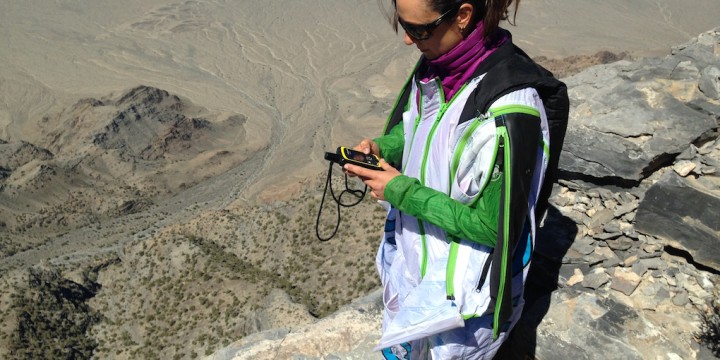
DeLorme InReach SE
- May 2014
- Gadgetry
The DeLorme InReach is the third GPS emergency device I’ve owned. I started with the SPOT device which allows you to press buttons to signal out to contacts you’ve chosen that you are OK or need help. It also has what I call the nuclear option, which uses satellite signal to alert the local 911 rescue service that someone at your GPS coordinates needs a rescue. If you like to go into the backcountry alone or in small groups, this is a very good tool to carry with you. Over time I became disenchanted with the SPOT device because you’re shooting blind: when you press the buttons, lights flash in confusing ways and you are never 100% sure your signal went out. To be fair, I have used a SPOT in 2 actual emergencies, and both times the local rescue service did receive the call. However, I also pressed the OK button many times when I was out around Moab, just to test it, and the signal never came through to my email or text, so this made me dubious. With a little more research, I learned that the satellite coverage SPOT uses is not 100% guaranteed in all places on earth.
I then bought a McMurdo Fastfind 210. This device is smaller than the SPOT and is a true nuclear option. It has only the emergency button, with an antenna that you unfurl from the unit, and the satellite coverage is among the best. The device itself is one of the most affordable out there, the battery lasts 5 years, and you have no annual fee to pay with the Fastfind, whereas the SPOT has an annual cost. If you do fire the device, you have to send it back for repacking, but other than that, there’s nothing you need to learn or do, except bring it with you. For my use (or ideally, lack thereof!), the Fastfind blows away the SPOT, and I was very happy with it, though I never had to use it.
For a while I held onto the SPOT even though it never left the house because they offered additional helicopter rescue insurance for an additional $8/year beyond the regular subscription cost, and I thought it was worth it to keep that. However, I subsequently learned that there are too many exclusions on the rescue insurance, the most dealbreaking ones being that you can’t call for rescue within 50 miles of your home address and that parachute activities are excluded, which I find unbelievably lame on an ethical level, so I ended all the service and got rid of the SPOT and have nothing good to say about that.
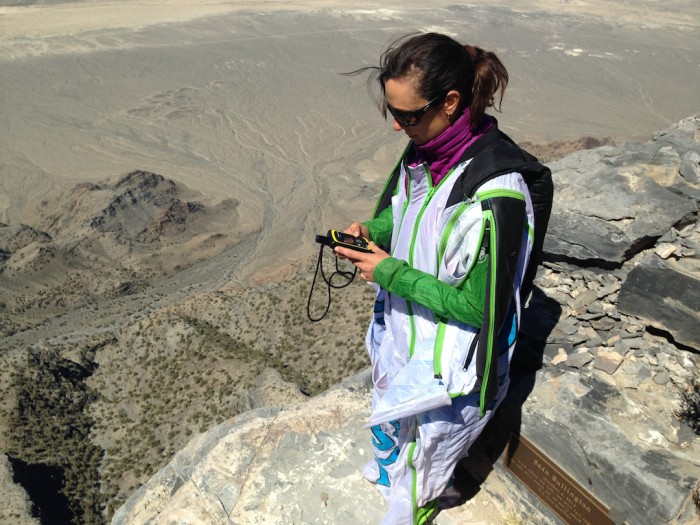
On to the DeLorme InReach. I use this device mainly for backcountry base jumping, and particularly for wingsuit jumping. I have now had the misfortune to have been there for 2 accidents where a loved one disappeared during a wingsuit flight and could not be found for some time–all we knew was there was no radio contact, and they went missing in some very big terrain. Searching for someone, not knowing if time is of the essence or not, remains the most horrible experiences I’ve had in my life ever.
I’ve also had several incidents where one of the group flew so far and out of sight that there was no radio contact and we had to wonder if they were okay until someone else jumped and landed. I’ve been involved in a few rescues where the jumper was hurt but not seriously, and the fastest, easiest and cheapest thing to do was to notify our friends who are world-class climbers and mountaineers, rather than calling the local rescue service. In many of the places we go, cell phones do not work, and it’s often impossible to even communicate within a small group on site, much less people back in service range. I wanted a device that could offer the “nuclear option” but would also do some even more specific tasks such as allow us to communicate with each other in a backcountry setting and have direct contact with others when specific communication is needed beyond “OK” or “help.” Even more, I wanted a device that could allow us to quickly locate someone who may be unconscious or dead, because there are few things more grueling than searching for someone in a vast mountain area, not knowing where they are or if anything can be done for them.
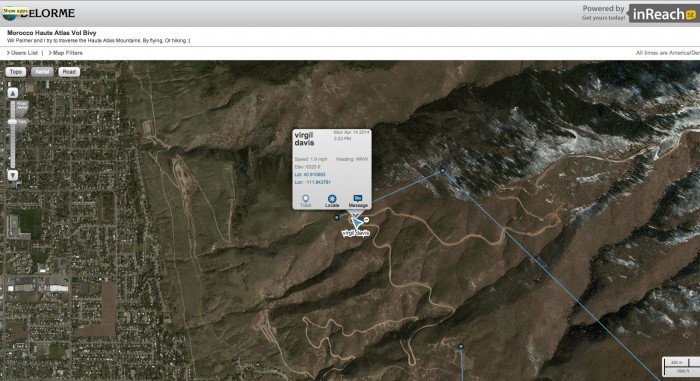
I’ve had the InReach for 3 months now. My boyfriend Ian has one too, and my brother Virgil also got one for a paragliding trip to Morocco that he’s on right now–he texts me several times a day from the InReach (mainly when he’s bored) and it is great. Early on Ian had a battery life issue, but he updated the firmware and it was solved. I generally have a horror of too much technology and am resistant to learning new devices….however the InReach is very user friendly even for those who have a fear of instruction manuals.
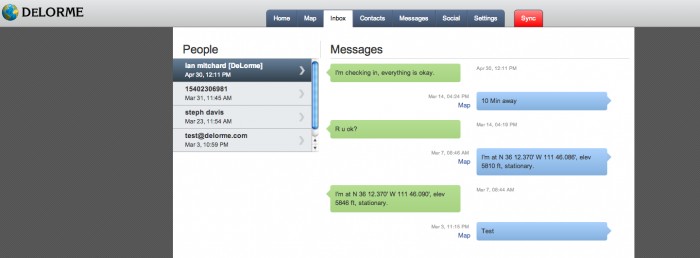
The most important feature of the InReach, I think, is the ability to send and receive text messages or emails no matter where you are. The amount of texting/emailing you’ll do depends on how much you want to pay. I got the basic Safety plan, since I intend to use it mainly for emergencies. My brother got a higher plan because he wanted to keep it on while flying over the mountains, and also be able to use it for texting while on his trip. What I like is that they recently added the Freedom plan, which allows you to activate service for specific trips. Ian and I have used it to communicate with each other while out in the backcountry, when the cell phones don’t work, and I’ve also used it to text to his phone when I was out alone. Living in Moab means that you are often in the “backcountry” out of cell range when you’re 3 miles from your house, which leads to a little inconvenience sometimes. So in a non-emergency setting, it has been pretty handy also.
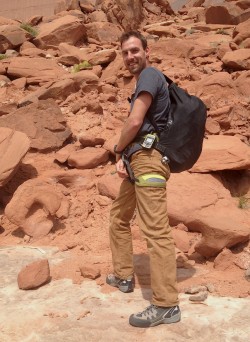
The InReach also has the “nuclear option” which sends your coordinates and a call for help to the main emergency headquarters who then notifies rescue crews around you. This is the same call center that you get with the SPOT device, and they seem amazing in my experience so far. More importantly, DeLorme uses the Iridium satellite network which is claimed to be 100% reliable anywhere on the planet.
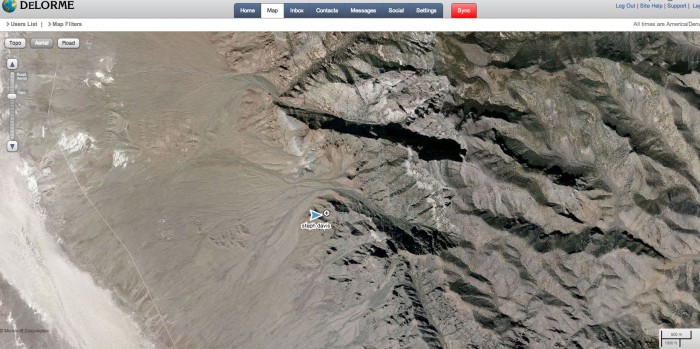
The other most important feature of the InReach, and the thing that really made me want it, is the internet tracking it offers. When the device is turned on, you can use the internet to locate the user. In a real life situation this will be slightly complicated to use: for example, if Ian and I are in the backcountry to do a wingsuit jump with no cell service, and he jumps and disappears and is out of communication, I would need to text or email someone with my InReach and ask them to search for his device online through the DeLorme explore page. This could take some time and requires someone on the outside to be reachable. Still, it could save hours or days of frantic searching, and I think it’s a really important feature that I hope I don’t need to use but am glad is available to me.
It is pretty laborious to send a text or email with the buttons on the device (remember the olden days of texting…) but you can sync it with your iphone and then it’s very easy to write your message. You can also do preset messages. The battery life seems quite good so far–I only turn my device on before I jump, and have only had to recharge it once.
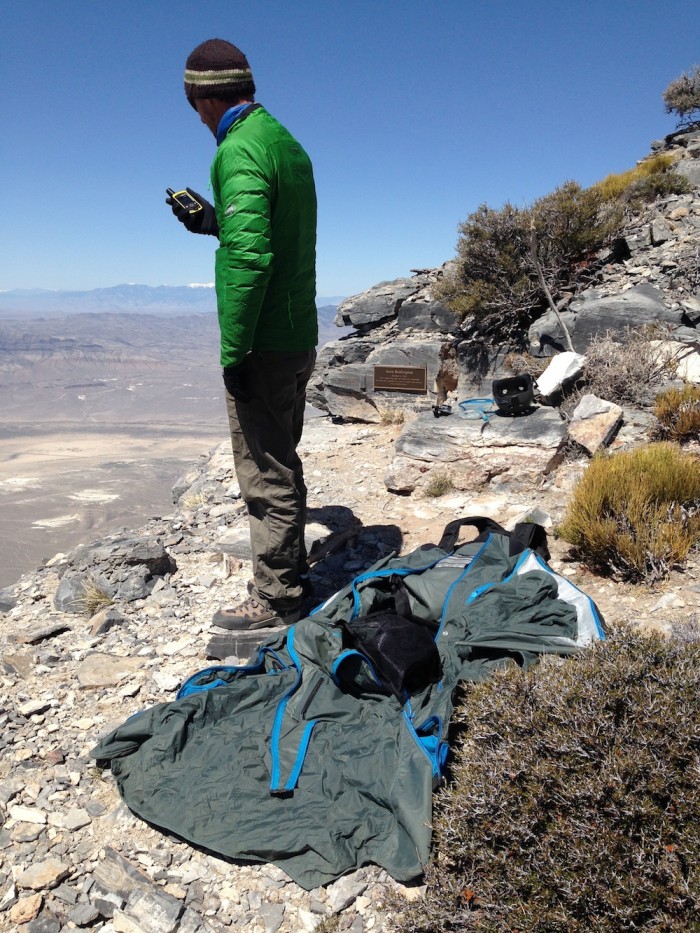
For now, the InReach is offering solutions to all my main problems. For base jumpers, climbers, wingsuit pilots, paragliders, hang glider pilots and backcountry hikers, I would highly recommend it.








My girlfriend bought the InReach SE for me in December for Christmas. I love it. With all the backcountry adventures I like to go on, by myself and with others, it is invaluable. The texting can sometimes take a while (15 mins) and it can also take quite a while to acquire a signal (took up to 2 hours once), especially if you haven’t updated it recently. Service is cheap though. From all the research I did, it looks like the best option. Thanks for the review.
I wanted to quickly add a note about my experience with SPOT vs the InReach. Aside from spending time in the backcountry, I also spend a good amount of time sailing offshore. During my last offshore trip, in the middle of the Pacific, my SPOT had what the company calls an “accidental activation”. Long story short, something in the hardware malfunctioned and send a series of SOS and SOS-cancelled messages, mobilizing the call center, my family, and three National Coast Guards. We had a backup Iridium (incidentally, what the InReach uses) phone on board, and they were eventually able to reach us on that and confirm we were OK, but not before a lot of money and heartache was expended. After I returned to shore, the SPOT company’s response to my incident report was incredibly blase and chill, and I did not appreciate it. Where I’m going with this is that the two-way nature of the InReach and its use of a more reliable satellite network are real material benefits. And I hope the device itself is less prone to accidental activation, but I cannot address that based on experience. In any case, the two-way functionality makes that kind of thing easier to overcome before it becomes expensive and scary.
thanks 🙂
that sounds terrible. I put a small circle of duct tape over the SOS button on my spot device, because I accidentally pressed it once and was fortunately able to quickly turn the device off before it got its satellite signal going. the DeLorme has a lock switch for the SOS button, which is definitely a very good feature.
Steph…. your gear review on this device is awesome.
I too disagree with the exclusion of parachute activities on the SPOT insurance. I have the SPOT 3, and I love it…. but your device appears clearly superior to mine. I would gladly offer myself up to a Facebook group or text message phone tree for S & R of our friends.
You should start the group…. it’ll save us a ton of cash for non-emergency help.
I am in Salt Lake City Utah, and have plenty of experience on the rope / gear / first responder experience.
Very helpful review as I’m in the decision process, trying to decide between the InReach and the Spot Connect. I was interested in the helicopter rescue insurance so good to know about exclusions; although I’m not a flier, I’ll research carefully.
Jan,hopefully this will help in your decision making:
1. SPOT Connect is 1 way, outbound only
2. SPOT Connect has a max of 41 characters per message
3. SPOT Connect cannot receive any messages from the outside world
4. SPOT Connect requires that you “pre-program” your contacts email/cell phone in advance, otherwise it wont work.
5. SPOT is rumored to “fudge” their coverage map a bit, setting expectations on service and coverage that may not be replicated in a real world scenario.
thank you James
[…] that way and if I’m in a place that has cell service, that could be a bonus. I also have a Delorme InReach emergency device. Mainly I have this device for what I call “the nuclear option”–you push the SOS […]
[…] also use a Delorme InReach emergency device. Mainly I have this device for what I call “the nuclear option”–you push the SOS button and a […]